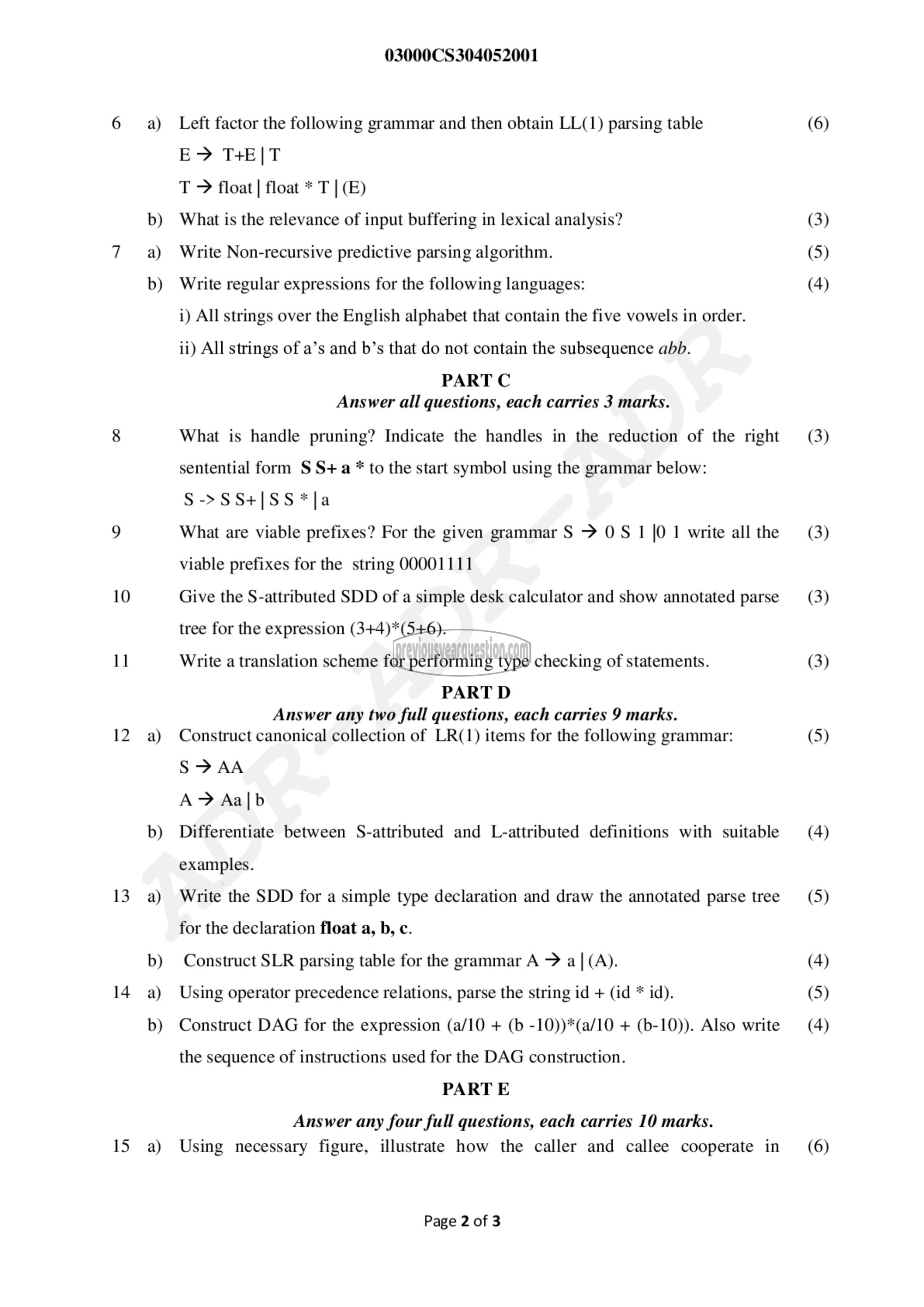APJ ABDUL KALAM TECHNOLOGICAL UNIVERSITY Previous Years Question Paper & Answer
Semester : SEMESTER 6
Subject : Compiler Design
Year : 2020
Term : SEPTEMBER
Branch : COMPUTER SCIENCE AND ENGINEERING
Scheme : 2015 Full Time
Course Code : CS 304
Page:2
10
11
12
13
14
15
a)
b)
a)
b)
a)
b)
a)
b)
a)
b)
a)
03000CS304052001
Left factor the following grammar and then obtain LL(1) parsing table
E> T+E|T
T > float | float * T | (E)
What is the relevance of input buffering in lexical analysis?
Write Non-recursive predictive parsing algorithm.
Write regular expressions for the following languages:
i) All strings over the English alphabet that contain the five vowels in order.
ii) All strings of a’s and b’s that do not contain the subsequence abb.
PART C
Answer all questions, each carries 3 marks.
What is handle pruning? Indicate the handles in the reduction of the right
sentential form 5 5+ a * to the start symbol using the grammar below:
S->SS+|SS*la
What are viable prefixes? For the given grammar S > 0 5 110 1 write all the
viable prefixes for the string 00001111
Give the S-attributed SDD of a simple desk calculator and show annotated parse
tree for the expression (3+4)*(5+6).
Write a translation scheme for performing type checking of statements.
PART D
Answer any two full questions, each carries 9 marks.
Construct canonical collection of LR(1) items for the following grammar:
ऽ ~> حم
م < 408 | 0
Differentiate between S-attributed and L-attributed definitions with suitable
examples.
Write the SDD for a simple type declaration and draw the annotated parse tree
for the declaration float a, b, ௦.
Construct SLR parsing table for the grammar A > a| (A).
Using operator precedence relations, parse the string id + (id * id).
Construct DAG for the expression (a/10 + (b -10))*(a/10 + (b-10)). Also write
the sequence of instructions used for the DAG construction.
PART E
Answer any four full questions, each carries 10 marks.
Using necessary figure, illustrate how the caller and callee cooperate in
Page 2 of 3
(6)
(3)
(5)
(4)
(3)
(3)
(3)
(3)
(5)
(4)
(5)
(4)
(5)
(4)
(6)
